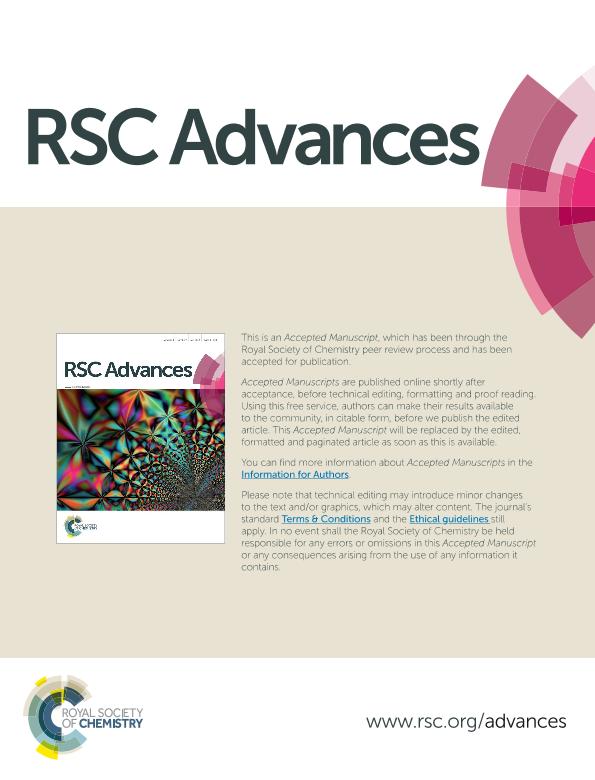Mostrar el registro sencillo del ítem
dc.contributor.author
Porasso, Rodolfo Daniel

dc.contributor.author
Ale, Norma Mercedes
dc.contributor.author
Ciocco Aloia, Facundo
dc.contributor.author
Masone, Diego Fernando

dc.contributor.author
del Popolo, Mario Gabriel

dc.contributor.author
Ben Altabef, Aida

dc.contributor.author
Gomez Zavaglia, Andrea

dc.contributor.author
Díaz, Sonia Beatriz
dc.contributor.author
Vila, Jorge Alberto

dc.date.available
2016-05-24T15:31:23Z
dc.date.issued
2015-05
dc.identifier.citation
Porasso, Rodolfo Daniel; Ale, Norma Mercedes; Ciocco Aloia, Facundo; Masone, Diego Fernando; del Popolo, Mario Gabriel; et al.; Interaction of glycine, lysine, proline and histidine with dipalmitoylphosphatidylcholine lipid bilayers: a theoretical and experimental study; Royal Society of Chemistry; RSC Advances; 5; 54; 5-2015; 43537-43546
dc.identifier.issn
2046-2069
dc.identifier.uri
http://hdl.handle.net/11336/5807
dc.description.abstract
The interaction of unblocked glycine, lysine, proline, and histidine (in their three forms, namely two tautomers and the protonated form) with a dipalmitoylphosphatidylcholine (DPPC) bilayer was assessed using extensive atomistic molecular dynamics simulations. Free energy profiles for the insertion of each amino acid into the lipid bilayer were computed along an appropriated reaction coordinate. The simulation results for glycine in the presence of DPPC were compared with experimental data obtained by Fourier transform infrared spectroscopy. Experimental results predict, in good agreement with simulations, the existence of intermolecular interactions between the DPPC head groups and glycine. Atomistic simulations were further extended to investigate the free energy profiles for lysine, proline and histidine, leading to the following conclusions: (i) lysine free energy profiles computed using a united atom force-field and an analog molecule, where the side-chain is truncated at the β-carbon atom, differ significantly from each other; (ii) the free energy profiles for the three forms of histidine are all very similar, although the charged form interacts mostly with the carbonyl groups of DPPC, while the tautomers interact with the phosphate groups; and (iii) proline does not show a minimum in the free energy profile, pointing to the absence of binding to the membrane lipids. Overall, this work contributes to our general understanding of the various factors affecting the interactions between amino acids and a model cell membrane, and may spur progress in the effort to develop new molecular models to study larger biological systems.
dc.format
application/pdf
dc.language.iso
eng
dc.publisher
Royal Society of Chemistry

dc.rights
info:eu-repo/semantics/openAccess
dc.rights.uri
https://creativecommons.org/licenses/by-nc/2.5/ar/
dc.subject
Dppc Lipid Bilayers
dc.subject
Glycine, Lysine, Proline, Hystidine
dc.subject
Interactios
dc.subject
Ftir
dc.subject.classification
Física Atómica, Molecular y Química

dc.subject.classification
Ciencias Físicas

dc.subject.classification
CIENCIAS NATURALES Y EXACTAS

dc.title
Interaction of glycine, lysine, proline and histidine with dipalmitoylphosphatidylcholine lipid bilayers: a theoretical and experimental study
dc.type
info:eu-repo/semantics/article
dc.type
info:ar-repo/semantics/artículo
dc.type
info:eu-repo/semantics/publishedVersion
dc.date.updated
2016-05-16T20:08:58Z
dc.journal.volume
5
dc.journal.number
54
dc.journal.pagination
43537-43546
dc.journal.pais
Reino Unido

dc.journal.ciudad
Londres
dc.description.fil
Fil: Porasso, Rodolfo Daniel. Consejo Nacional de Investigaciones Científicas y Técnicas. Centro Científico Tecnológico San Luis. Instituto de Matemática Aplicada de San Luis; Argentina
dc.description.fil
Fil: Ale, Norma Mercedes. Universidad Nacional de Tucuman. Facultad de Bioquimica, Quimica y Farmacia. Instituto de Quimica Fisica; Argentina
dc.description.fil
Fil: Ciocco Aloia, Facundo. Universidad Nacional de Cuyo; Argentina. Consejo Nacional de Investigaciones Científicas y Técnicas; Argentina
dc.description.fil
Fil: Masone, Diego Fernando. Universidad Nacional de Cuyo; Argentina. Consejo Nacional de Investigaciones Científicas y Técnicas; Argentina
dc.description.fil
Fil: del Popolo, Mario Gabriel. Universidad Nacional de Cuyo; Argentina. Consejo Nacional de Investigaciones Científicas y Técnicas; Argentina
dc.description.fil
Fil: Ben Altabef, Aida. Universidad Nacional de Tucuman. Facultad de Bioquimica, Quimica y Farmacia. Instituto de Quimica Fisica; Argentina. Consejo Nacional de Investigaciones Científicas y Técnicas. Centro Científico Tecnológico Tucumán. Instituto de Quimica del Noroeste; Argentina
dc.description.fil
Fil: Gomez Zavaglia, Andrea. Consejo Nacional de Investigaciones Científicas y Técnicas. Centro Científico Tecnológico La Plata. Centro de Investigaciones en Criotecnología de Alimentos (i); Argentina
dc.description.fil
Fil: Díaz, Sonia Beatriz. Universidad Nacional de Tucuman. Facultad de Bioquimica, Quimica y Farmacia. Instituto de Quimica Fisica; Argentina
dc.description.fil
Fil: Vila, Jorge Alberto. Consejo Nacional de Investigaciones Científicas y Técnicas. Centro Científico Tecnológico San Luis. Instituto de Matemática Aplicada de San Luis; Argentina. Cornell University; Estados Unidos
dc.journal.title
RSC Advances
dc.relation.alternativeid
info:eu-repo/semantics/altIdentifier/url/http://pubs.rsc.org/en/content/articlelanding/2015/ra/c5ra03236a
dc.relation.alternativeid
info:eu-repo/semantics/altIdentifier/doi/http://dx.doi.org/10.1039/C5RA03236A
Archivos asociados
